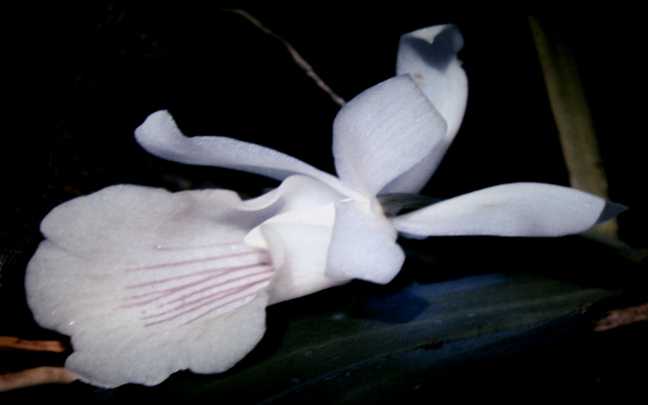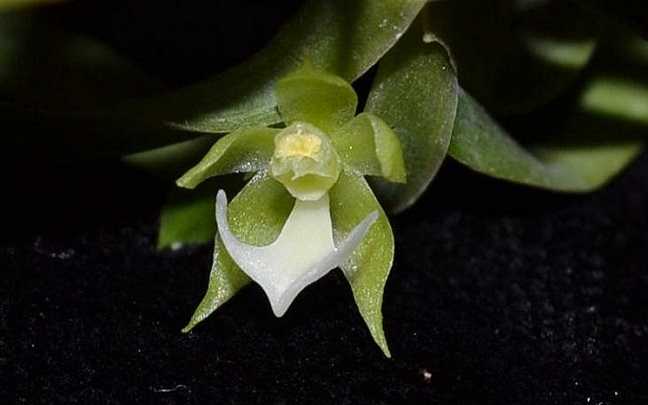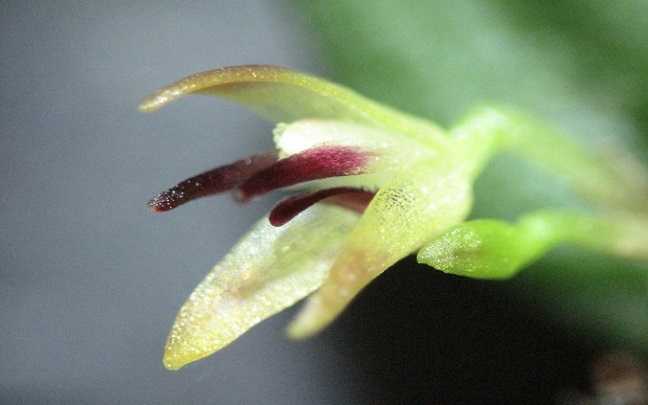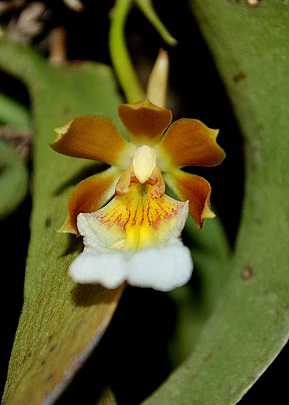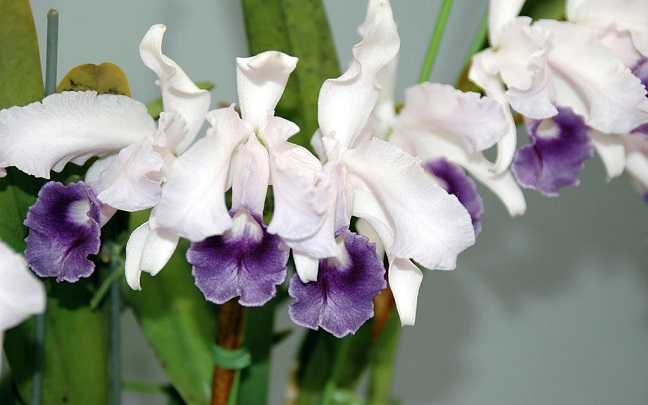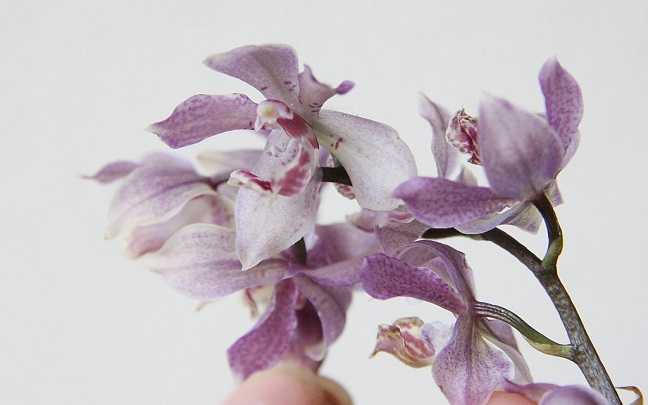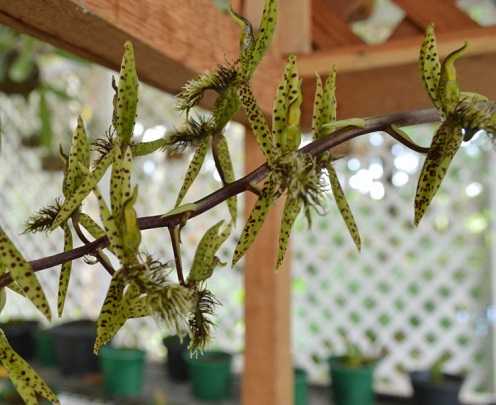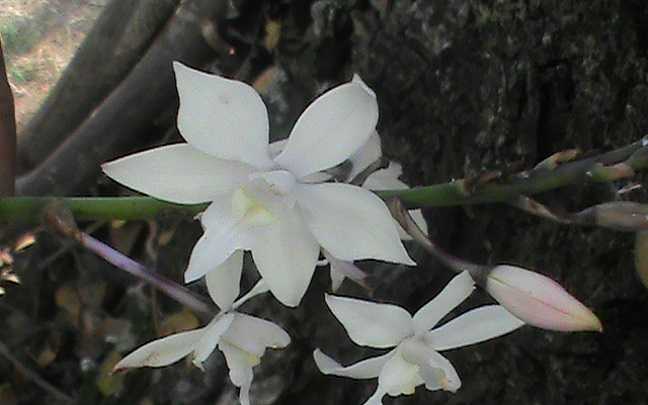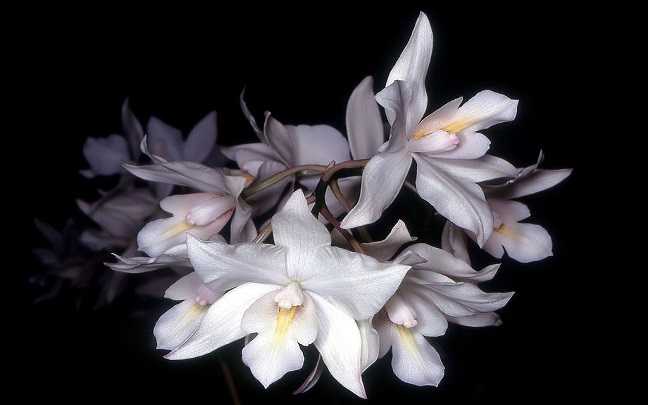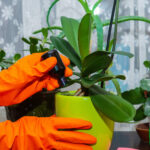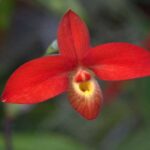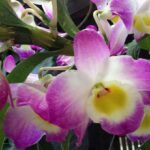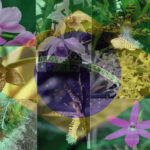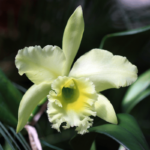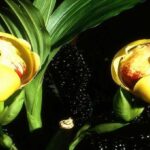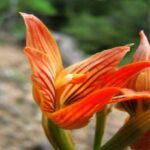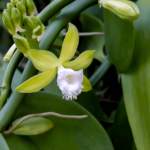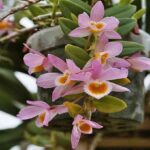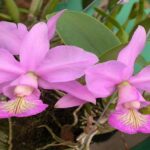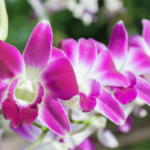Considered the world’s largest forest, the Amazon is home to hundreds of orchid species, most of which are small or miniature in size.
Additionally, new species are discovered almost every year.
Keep reading this article, because you’ll get to see some native orchids of the Amazon.
Learn How to Achieve Super Blooms on Your Orchids
🛑 If you love orchids and you're tired of not being able to make them bloom...
Then, know that thousands of beginner growers are achieving beautiful flowers on their orchids by following this method.
Click the button below to have beautiful orchids with show-worthy flowers every year. ⤵
1 – Warczewiczella amazonica
The Warczewiczella amazonica was already listed in the article about 22 Brazilian orchids you don’t know.
It can be found in the Amazon basin.
Being an epiphytic orchid with a very large flower, reaching up to 25 centimeters (9.8 inches).
This flower emits a light fragrance and appears between winter and spring.
You can usually find it in damper locations ranging from 150 to 1000 meters (492 to 3280 feet) above sea level.
To cultivate it, you need good humidity, as they don’t have pseudobulbs.
Also, be very careful with black rot.
2 – Dichaea bragae
This orchid was recently discovered by researchers from Inpa.
Dichaea bragae was named in honor of the researcher Pedro Ivo Soares Braga.
It was collected near Manaus, in a very humid location.
This is an orchid that has large stems and a small flower, about 5 millimeters (0.2 inches) in size.
3 – Cattleya Eldorado
This orchid is known as the queen of the orchids of the Brazilian Amazon.
It can be found near the Rio Negro, in the vicinity of Manaus.
Cattleya eldorado is an epiphytic orchid that likes a lot of humidity and also a good amount of light.
But don’t overdo it, avoid excess.
Its flowering occurs during the summer, producing flowers about 10 centimeters (3.9 inches) long.
Learn more about cattleya orchids.
4 – Anathallis manausesis
This orchid from the Amazon was discovered along with Dichaea bragae.
Its name was given in honor of the city of Manaus.
Anathallis manausesis is a very small orchid.
Its flowers typically reach only 3 millimeters (0.1 inches), and the plants themselves don’t exceed 1 centimeter (0.4 inches).
This can be considered a mini or micro-orchid.
5 – Trichocentrum fuscum
This orchid is native to various locations in Brazil.
In addition to the Amazon, it can also be found in some southeastern states and in Bahia.
Trichocentrum fuscum prefers humid places and little light.
It can be found growing on trees, being a very small orchid that doesn’t have pseudobulbs.
Regarding its flowering, it occurs during the summer.
It can produce up to 3 flowers, which average about 3 centimeters (1.2 inches) in length.
Usually, its flowers are brown with yellowish edges.
6 – Cattleya Lawrenceana
This is one of the most beautiful orchids of the cattleya genus.
It is found in the state of Roraima and also in Venezuela.
Its name was given in honor of the president of The Royal Horticultural Society, James John Trevor Lawrence.
It was discovered in 1884 by Frederick Sander, being an epiphytic orchid.
Cattleya lawrenceana has leaves that reach up to 20 centimeters (7.9 inches) in length.
Its flowering occurs in winter.
It has flowers that are slightly smaller than its leaves.
Normally, 5 flowers appear on each floral stem.
7 – Heliconia Densiflora Verlot
You can find this orchid in the southeastern Amazon, in the following states:
- Amazonas
- Acre
- Rondônia
- Mato Grosso
Usually in closed forests and at altitudes ranging from 200 to 800 meters (656 to 2625 feet).
They bloom all year round, especially from September to March.
Their flowers are orange and in some cases can be yellow.
8 – Acacallis cyanea
This orchid is part of a very small genus, with about 4 species.
Almost all of them are native to the Amazon.
In addition to Brazil, it can also be found in Venezuela and Colombia.
Acacallis cyanea is an epiphytic orchid that lives at altitudes of 100 to 600 meters (328 to 1969 feet).
It loves humidity and little light.
Its flowers appear in groups of 3 to 10 on each floral stem.
They have a very pleasant smell and also come in a variety of colors.
If you live in the south or southeast, avoid cultivating this orchid, as it probably won’t adapt to your environment.
To learn more, visit: https://en.wikipedia.org/wiki/Aganisia_cyanea
9 – Brassia lawrenceana
This is an epiphytic orchid that grows sympodially.
It is found in the states of Amazonas and Pará.
It usually resides in humid and shaded places.
Like cattleya lawrenceana, this plant was named after James John Trevor Lawrence.
Its flowering occurs in winter and lasts about 20 to 25 days.
Its flowers are medium-sized, but appear in large quantities.
There are about 20 flowers for each floral stem.
To cultivate it, use a plastic pot, good humidity, and shade (60%).
10 – Catasetum
This orchid was discovered in 2016 in the state of Amapá.
The only thing known about it is that it belongs to the casetasetum genus.
Although it looks very similar to a catasetum barbatum, DNA research on this species showed that it is different.
See the news about the discovery of this orchid here (in portuguese).
11 – Caularthron bilamellatum
Caularthron bilamellatum was discovered in 1958 by R.E. Schult.
It can be found in Brazil, Mexico, and also in Trinidad and Tobago.
This is an epiphytic orchid that can be found in the Amazon forest in the state of Roraima.
Its flowers are about 1.5 centimeters (0.6 inches) in diameter, and there are 6 to 10 flowers per flowering.
They can be white or have a slight pinkish hue.
12 – Caularthron bicornutum
Also known as the Orchid of the Virgin Mary.
It is an epiphytic orchid that can be found growing near the sea.
Interestingly, its name means with two horns.
As for its flowers, Caularthron bicornutum has fragrant flowers.
During its flowering, up to 20 flowers open successively, and normally its flowers are white.
To cultivate it, avoid too much water in its pots and provide temperatures between 10 and 35 degrees Celsius (50 and 95°F)
Conclusion – Orchids of the Amazon
These were just a few of the more than 800 species of orchids that exist in the Amazon.
If you want to learn more about orchids, you can access some of our articles below:
Or if you want to learn more about Amazon orchids, you can access this research (in portuguese).
And if you liked this article, help us spread the word.
Click on the icons below and share it on your social networks.

